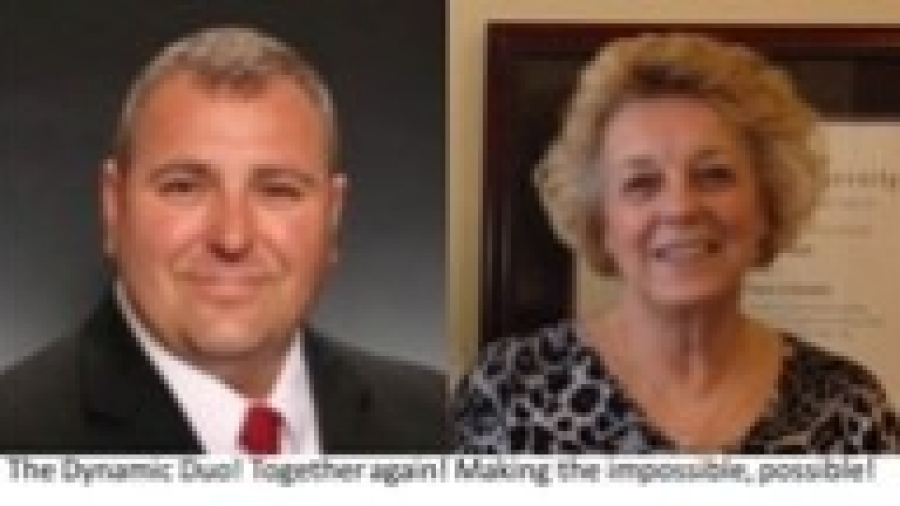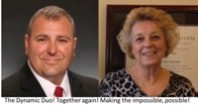 Seems most of my business coaching clients are creating/experiencing some form of overwhelm lately. I want to start with stating that overwhelm is a state of mind and a way of being. It is NOT a set of circumstances. It is resistance to what is. It is NOT loving what is going on. The DISTINCT difference of how to STOP overwhelm is what you are willing to do about it and taking responsibility in it.
Seems most of my business coaching clients are creating/experiencing some form of overwhelm lately. I want to start with stating that overwhelm is a state of mind and a way of being. It is NOT a set of circumstances. It is resistance to what is. It is NOT loving what is going on. The DISTINCT difference of how to STOP overwhelm is what you are willing to do about it and taking responsibility in it.
Don’t Ask… Present!
Think about it… if you are asking your boss, the business owner, for a raise, you want to speak his language, right? You want to put it in terms that make sense to him. Well, let’s consider how he gets paid. Ultimately, he puts dollars in his pocket from getting clients to hire him.
Now, to obtain this money, he doesn’t ask clients to hire him… he has to make a presentation of your company’s services and conclude it with the price it will cost the client to have these services.
So often we forget that we, as employees, should treat our bosses as we treat our clients. We would never show our worst side to our clients. We make the extra effort to make sure things are presented and prepared well for them. We should do the same for our bosses. Often, when working in a small business, things are casual and you work closely with your boss, which is great, but it can allow us to get too comfortable, or even sloppy, in our presentation to our boss. It’s not that you can’t be comfortable or even have a friendship with your boss, but you should always make sure you are presenting yourself as a valuable resource. Make sure they have facts about the results you produce–tracking reports, sales numbers, clients billed, and so forth. This is never more important than when you are making a presentation for a raise.
So, when you feel it’s time to discuss a raise, schedule a meeting and prepare a presentation. Never bring personal issues into the conversation (i.e., personal financial struggles, the cost of childcare or tuition, your divorce, etc.) Again, working in a small office can lend an aura of intimacy that sometimes just isn’t appropriate in certain conversations, like asking for a raise. It’s often hard to draw a line between “what goes” and “what doesn’t,” but you should be able to tell by instinct and by reading your boss’s personality. So, discussing personal issues with your boss depends on your relationship.
However, even if you do talk about these things, they don’t belong in this discussion about a raise. You should never request or receive a raise based on personal need. You should request and receive a raise based on your value to the company. Use the formula in this chapter to present your value and get your raise.
There’s a Time and a Place
Nothing can hijack a conversation more than the wrong time or place. In an already potentially awkward conversation, eliminate distractions and disruptions that can make you lose control of the setting. Carving out quality time to present your proposal is a slippery slope. This doesn’t have to be a desperate thing. Don’t grab any 10 free minutes your boss might have. That would result in bad timing, lack of his attention, and usually a “let me think about it and get back to you” answer because there isn’t enough time to work it through together.
Getting Down to It
So, now you’re here for the meeting. Your boss is paying attention, and it’s Showtime! First, always thank your boss: “Thank you for taking time out of your busy schedule to meet with me today. I appreciate it.” Next, acknowledge him. “I know you have a lot to do, so I’ll keep our time commitment and make sure we stay on track.” Then, get to it. “I’d like to go over with you where I’ve grown over the past and share the value I have produced and talk about where I would like to grow over the next year. I want to make sure it’s in line with what you need from me and that you see how I can support you and the firm more. And I’d like to talk about how to value the role I currently play in the firm. I have some ideas I’d like to share with you.”
Usually, a boss is more than willing to listen to your suggestions and give feedback, and prefers this to having to come up with all the ideas himself. And usually you end up with a decision closer to what you ultimately wanted if you initiate the ideas!
Now, there’s a dangerous pause where you can lose control of the meeting. Let your boss reply, but don’t let him start throwing out ideas and thoughts. Go over what you have prepared before you start brainstorming about the future. So, if your boss starts to toss around ideas, politely interject:
“Great, let me jot down what you said so we don’t forget that idea, and if I could, let me run through what I’ve accomplished over the past (time frame since last raise). I found it very interesting when I reviewed it, and I think it will help us see what I am capable of in the future as well.”
See how we just “spun” this from being a laundry list of things you have done to an essential part of the “future idea” process? It’s much more engaging for a business owner.
Are you willing to let some things go, accept reality? Can you appreciate your full plate? Can you appreciate your full schedule? Can you find a peaceful center when dealing with things that normally drown you into worrying? Can you love pressure and respond appropriately? Can you find the right question to ask yourself? Tony Robbins recommends these questions when faced with a big problem:
1. What is not perfect yet?
3. What am I willing to do to make it the way I want it?
4. What am I willing to no longer do to make it the way I want it?
5. How can I enjoy the process while I do what is necessary to make it the way I want it?
The idea is to focus on solution rather than the problem itself. Remember, overwhelm is not a set of circumstances. It is resistance to what is. The DISTINCT difference of how to STOP overwhelm is what you are willingness to stop and restart and take responsibility.
Shared with permission by “Don’t be a Yes chick…”
Molly Hall




















